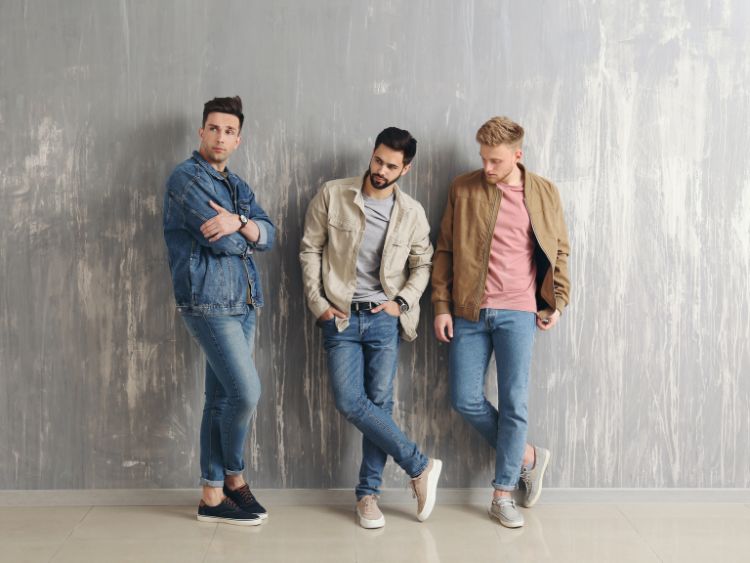How to make your fashion brand stand out
Retailers in all industries need to be flexible to adapt to changing consumer behaviour patterns. What can fashion brands do to adapt to these changes and remain on the cutting-edge?
Define your target customers.
Fashion is a huge industry. It’s important to identify your target market so you can stay on the right path. A clothing brand that caters to middle-aged customers is not a good idea.
It is therefore important to know the purpose of your brand. Does it sell clothes for all ages or just a subset? This is applicable to different customer segments based on their age, gender, hobbies, and so forth. This helps you to identify your unique selling point and can be used to make your brand stand apart from others.
This does not mean that you have to narrow down your target customers. For example, a shop that sells to all of your family members is no less competitive than any other shops. Brands should communicate their message and principles to their customers in the best way possible.
Multichannel shopping is possible
The shift to ecommerce, as mentioned earlier, is one of the most prominent trends in fashion. Customers are still shopping on multiple channels, from mobile to in store to social commerce and marketplaces. Fashion brands must adapt to these changes in customer shopping habits and offer seamless shopping across all channels. Combining offline and online stores can increase customer reach and brand influence. You can also consider building a social media profile, managing your website and making use of online marketplaces.
B-Wear Sportswear shows the value of an online shift. B-Wear Sportswear was a physical store that sold only before 2018. The company experienced a 162% rise in revenue and an 81% increase site traffic after expanding to ecommerce through BigCommerce.
Do your research about the market and the customers you are targeting to find out which platforms they prefer. The social media platform that is most popular for shopping, for example, is different across the globe.
Fashion retailers use multi-store management tools today to manage the complexity of offering an omnichannel experience.
Create an omnichannel shopping experience.
Today’s fashion shoppers have unique cross-platform shopping habits, as we mentioned. Online window-shopping or checking out the brand’s social media channels before they make a purchase in the store. Sterling Brands, Ipsos Media CT, and Google all found that 42% of online shoppers still use their mobile devices to check information before they shop in-store. You can stand out by providing multiple channels and an omnichannel experience.
An omnichannel shopping experience is a collection of touchpoints on different shopping channels that connect seamlessly. Customers can shop online and then pick up their item in an offline store.
It is not easy to create an Omnichannel business. The latest technological advances have made this process easier. A POS system that synchronizes real-time can connect multiple channels and give real-time information about product availability. ConnectPOS is an example of a great POS system for fashion brands. It supports click-and collect and mobile shopping with their PWA application.
Maintain a consistent brand image
Ask yourself the following question: If you were a brand with a personality, how would you communicate your feelings to others?
Fashion brands need to maintain a consistent image. As everyone knows, Nike is made for athletes of all levels. Gucci, on the other hand, is synonymous with elegance and modernity. Fashion brands must decide which style they will do, in addition to their target customers. This can be a brand’s overall style or a look specific to a particular collection.
Consistency in brand image is key to demonstrating that you are different than your competitors. Lucidpress reports that consistency in brand presentation can lead to 33% higher revenue. It is important to maintain consistency across all communication elements. This includes using the same logo, the same color palette, and consistent messages across platforms. These elements will become more familiar to customers over time and create a distinct ‘look’ for your brand.
Fashion companies must follow the brand’s guidelines to maintain consistency. The brand image must be visible to the public as well as its employees. High levels of interaction between customers and staff in fashion stores is common. Customers often ask for sizes, colors, or advice from staff members while shopping. It is crucial to train your staff on how to communicate with customers, both in physical stores and online.
Attention to social responsibility
Fashion brands have become more responsible to consumers. According to PwC, 64% customers said that their decision to buy or not to buy a brand was influenced by its social or political position. These social responsibilities in the fashion industry often include sustainability, ethics, and social inclusion.
Fashion, particularly fast fashion, has been plagued by pollution problems. It has been widely criticised that the materials used to mass-produce clothes are often made from waste and toxic chemicals (e.g. sodium hydroxide
There are also problems with cheap labor. According to the Oxfam 2019 report, less than 1% Bangladeshi and Vietnamese garment workers could earn a living wage. Some fast fashion brands are accused of violating human rights in sweatshops. Workers work in poor conditions and exposed to harmful chemicals, which is why they can offer competitive pricing and rapid production.
Your core values should be practiced
86% of consumers believe authenticity is the key factor that determines their favourite brands. Instead of being a section in the “About us” section, core values should be at the heart of all business activities. These values should reflect what is important to your brand and not what people are looking for.
If a fashion brand is able to live up to its core values, it can win many customers’ hearts. If you want to claim that materials are eco-friendly, do your research thoroughly and implement it during the production process.
Trust and loyalty can be built by being authentic in your words and actions. This is the best way to grow your business over time.
Tell your brand story.
You can also tell a story through your fashion brand, making it personal. Storytelling can bring out emotions and give meaning to your clothes or accessories. Share your personal motivations and mission with your customers if you have one. Online platforms and visual elements make it easy to tell stories in many ways. Storytelling can improve your customer relationships and enhance your brand image.
Do not lose sight of product quality.
A brand cannot be bold without first meeting the essential requirements. It doesn’t matter how well you market your brand, if the quality and fit of your clothing does not meet customer expectations. From the very beginning of production, ensure that you inspect the quality of your products.
These requirements could include the feel of the materials, their durability or origins. You should ensure that your products are of the highest quality within the budget you provide. Satisfaction with your products is what will keep customers coming back. Promotion can be a great way to attract new customers, but product quality will keep loyal customers.
Read Aslo:
https://www.fashioninform.co.uk/how-to-wear-dresses-in-winter/
https://www.fashioninform.co.uk/maxi-dresses/
https://www.fashioninform.co.uk/womens-loungewear/
https://www.fashioninform.co.uk/valentines-day/
https://www.fashioninform.co.uk/loreal-infallible-matte-foundation/
https://www.fashioninform.co.uk/tips-for-vintage-shopping/
https://www.fashioninform.co.uk/vanishing-points-in-your-photography/
https://www.fashioninform.co.uk/how-to-wear-yoga/
https://www.fashioninform.co.uk/ten-usability-heuristics-for-design/
https://www.fashioninform.co.uk/7-steps-to-make-a-shirt/


